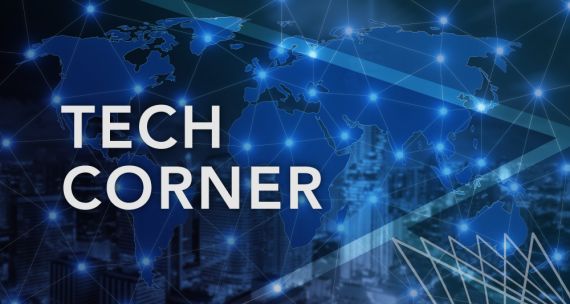With the objective of learning from the rich experiences and lessons that other countries have gained from small- and medium-sized enterprise (SME) export assistance programs, the Asia Pacific Foundation of Canada presents a new research report series, “Going Global.” To read the entire report, please jump to the blue download tab at the end of this piece.
---
In 2003, Austria’s export promotion agency, Advantage Austria, and Austria´s Federal Ministry of Science, Research and Economy joined forces on a broad “Go International” strategy for companies of all sizes and sectors. Endowed with approximately C$44M a year, Go International aims to go beyond the traditional portfolio of export promotion services that cater to established exporters and to create new export promotion services targeting non-exporters.
One of the many initiatives under the umbrella of Go International is “Go Silicon Valley.” Go Silicon Valley began in 2009 with the general objective of helping highly innovative startup companies access the U.S. market for both capital and business development purposes. The Go Silicon Valley initiative rests on contractual relationships that Advantage Austria maintains with the Industrial Liaison Program at the Massachusetts Institute of Technology and a co-operation agreement with SRI International. With its cutting-edge knowledge of emerging industries/sectors, Advantage Austria is constantly assessing sector needs and opportunities. Based on these assessments, up to 20 participant companies are selected each year through a competitive selection process. Selected companies receive initial training in Austria, are provided with market intelligence, and are then transplanted into a business incubator/startup centre in Sunnyvale, CA, where they receive coaching and matchmaking services, and have the opportunity to engage in customer exploration and pitch events through the incubator’s networks. After a period of three months in the United States, companies return to Austria. In addition to the goal of generating exports directly by identifying customers/clients in the United States, a long-term objective is also to generate exports by helping the program participants form long-term relationships with networks that include customers, investors, and business partners.
OBJECTIVES OF THE PROGRAM
The long-term goals of Go Silicon Valley are the promotion, initiation, and expansion of exports, while the immediate objective is to increase the competitiveness of young startup companies that have significant global growth potential. Often, these companies are players in technological niches whose markets are outside of a home market – the so-called “born globals.” While Go Silicon Valley does not exclude any particular sector, companies selected for participation are typically information- and communication-technology companies. According to the initiative, the ideal participant is an Austrian startup, small or medium-sized enterprise, or spinoff that has the following:
- A minimum of two full-time employees;
- A novel business idea/model;
- Registered intellectual property or a patentable invention;
- An existing prototype or early market validation;
- A clear understanding of its goals for the U.S. market;
- A commitment to deploy one or two decision-makers for one to three months;
- A commitment to bear its own cost of living during the program;
- An excellent command of English; and
- No prior participation in the program.
Most program participants meet these criteria; however, the program is also flexible enough to accommodate exemptions. The Go Silicon Valley program provides assistance to participating companies (individuals) by:
- Helping them to refine their business model;
- Preparing them for investor pitches;
- Providing access to investor and customer networks;
- Unlocking marketing intelligence;
- Helping them to achieve market potential;
- Preparing them for growth and rapid scaling; and
- Improving their managerial skills via mentoring and coaching.
SPECIFIC INTERVENTIONS
Business accelerators are dedicated to providing fast-growth environments for startups, typically through short-term programs that provide office or lab space, seed capital, intensive advisory and mentoring support, and constant exposure to investors, technology partners, mentors, and peers. It is in these environments that high-growth startups are created. Advantage Austria has therefore decided to partner with a local accelerator called the Plug and Play Tech Center in Sunnyvale, CA, to help create this environment for Austrian startups. Plug and Play is an accelerator with a strong track record of incubating companies and, since 2009, hosting international startups from over 20 countries. The program follows an annual cycle that includes several steps:
- Open application with an annual deadline (December);
- Participation at an informational and pitching workshop (January);
- Ten-minute pitch presentations to a jury consisting of two representatives from U.S. venture capital firms, one representative from Plug and Play, and one representative from Advantage Austria (February);
- Nomination of selected companies by jury based on the novelty of the business idea, the scalability of the business model, and their suitability to the Plug and Play accelerator environment (March);
- A pre-departure workshop on logistics and the Silicon Valley environment (March);
- Participation in the program (in quarterly tranches); and
- An alumni meeting (TBD).
The program in Silicon Valley itself also follows a prescribed structure. Participants begin their stay at the business accelerator with a four-day induction program giving them an overview of the Silicon Valley business environment, as well as an introduction to writing business plans and techniques for business development, fundraising, and pitching. During their stay, participants enjoy full-service office space and the support of mentors and advisors. The busy program includes skills workshops, events, and introductions to corporate, investor, and technology partners. Toward the end of the program, participating companies have the opportunity to present their business ideas to a group of investors (venture capitalists, angel investors, and corporate investors) at Plug and Play’s quarterly EXPO showcase. Throughout their stay, Advantage Austria participants receive assistance from executives from the Los Angeles office in defining or revising goals, finding networking opportunities, and monitoring their progress.
Advantage Austria’s services in the program include:
- The rental cost of office space at Plug and Play;
- Reimbursement of fees for workshops and events;
- Coverage of costs for mentors; and
- Monthly meetings and individualized service during the stay at the accelerator, including access to attorneys, CPAs, and insurance providers.
OUTCOMES ATTRIBUTABLE TO THE PROGRAM
There are close to 100 applications to the program each year. Approximately 60 to 80 startups participate in the 10-minute pitch presentations, and up to 20 companies a year participate in the program (up to five per quarter).
At the beginning of the engagement, each participant company is asked to define the objectives for its stay in Silicon Valley. Most mention one or more of the following objectives:
- Obtaining market intelligence (competitor landscape, market-entry strategy);
- Finding business partners (sales channel, strategy);
- Finding B2B customers;
- Business development; and
- Finding investors.
Since the participants come to Silicon Valley with vastly different goals, there is no single metric to measure the success of the engagement. Therefore, in order to track the level of achievement of their goals, each Austrian participant is interviewed twice – once by members of Advantage Austria/the Austrian Trade Commission in Los Angeles and once by the hosting accelerator. In the initial interview (the first week after the company representatives arrive in Silicon Valley), realistic goals are defined after a thorough discussion of their business plans. The exit interview is held shortly before the end of their stay. At that point, each outgoing company is required to make a presentation about the goals met/missed; in a subsequent discussion, further tasks are recommended. According to an internal report by Advantage Austria, most companies report fundamental changes both at the individual and the corporate level.
In addition, the participants not only rate themselves, but they also rate the program via a questionnaire that they complete at the end of the program. Annual ratings average “very good” to “good” in the following categories:
- Business targets achieved;
- Organization;
- Information access;
- Faster achievement of business targets;
- Finding new business partners;
- Cost/performance ratio; and
- New projects/contracts/success stories.
An additional measure for the success of the program is whether participants have set up subsidiaries in the United States. Virtually all companies have been successful in finding strategic partners or distribution channel partners. Of the 86 companies that went through the program between 2010 and 2015, 13 have set up U.S. subsidiaries and three companies were acquired.
Advantage Austria clearly views the program as a successful initiative. It has therefore expanded variations of the program to other locations (such as Tel Aviv, which is also a hotbed for entrepreneurship). In 2016, it opened a joint office in Silicon Valley with the Austrian Federal Ministry of Science Research and Economy so that Austrian companies and individuals in Silicon Valley may be even better served.
APPLICATION TO CANADA
Canada already has a mechanism for the support of Canadian startups that is tied to Silicon Valley. The Global Markets Action Plan outlines the Canadian Technology Accelerator initiative that currently has hubs in New York City, Boston, and Silicon Valley (at the Plug and Play accelerator that also partners with the Austrian Go Silicon Valley initiative). As well, since January 2016 Canada House – a collaboration of MaRS Discovery District, Communitech, the University of Waterloo’s Velocity, RBC, and C100 – has become a new home for Canadian entrepreneurs visiting Silicon Valley. At first glance, it therefore appears that there are no lessons to be learned from the Austrian program.
However, after a review of both programs, there are still opportunities for an adoption and/or adaptation by Canadian export assistance programs. First, it appears that the conditions of the Canadian Technology Accelerator initiative require startup companies to be further along in their development. An extension of the program to early (earlier) stage companies may therefore be a possible direction of development. Second, as the Austrian program has already taken steps to take Go Silicon Valley to other areas with distinct entrepreneurial ecosystems (Tel Aviv), we feel that Canada could follow a similar route of expansion. There are several global hotbeds for entrepreneurship that would not only enable Canadian companies to grow, but also to establish a foothold in strategically important markets (for instance, the startup ecosystem in Singapore as a gateway to Asia).
SOURCES
Advantage Austria (2014). Best practice case study and application for TPO Network Awards, unpublished document.
Austrian Startups (2016). Technologieinitiative Go Silicon Valley 2016/2017, https://www.austrianstartups.com/event/technologieinitiative-go-silicon-valley-20162017/.
Canada House (2016). http://www.thec100.org/canada-house/.
Canadian Trade Commissioner Service (2016). Canadian Technology Accelerator – Silicon Valley, http://tradecommissioner.gc.ca/world-monde/154291.aspx?lang=eng.
Global Affairs Canada (2016). http://international.gc.ca/global-markets-marches-mondiaux/plan.aspx?lang=eng.
Go Silicon Valley Facebook Group (2016). https://www.facebook.com/groups/gosv.Austria/.
Wirtschaftskammer Kaernten (2016). Go Silicon Valley, https://www.wko.at/Content.Node/branchen/k/Go-Silicon-Valley.html.
Wirtschaftskammer Oesterreich (2016). Open Austria Initiative‘ als Türöffner ins Silicon Valley, https://www.wko.at/Content.Node/service/aussenwirtschaft/us/pwk_509_16_-Open-Austria-Initiative--als-Tueroeffner-ins-.html.
Wirtschaftskammer Oesterreich (2016). Große Nachfrage nach dem Programm „Go Silicon Valley“, https://www.wko.at/Content.Node/service/aussenwirtschaft/us/AUSSENWIRTSCHAFT-AUSTRIA:-Grosse-Nachfrage-nach-dem-Progr.html.
Wirtschaftskammer Oesterreich – Aussenwirtschaft (2016). Technologieoffensive – Go Silicon Valley 2016-2017 Programmablauf, http://wko.at/aussenwirtschaft/veranstaltung/100-57609-gsv-programmablauf.pdf.
Zettel, C. (2016). Go Silicon Valley sending 18 startups to America, Futurezone, http://futurezone.at/english/go-silicon-valley-sending-18-startups-to-america/56.538.276
Other reports in our “Going Global” series:
Going Global: Learning from Global Innovative SME Export Assistance Programs
Sector-Specific Initiative: Austria’s Go Silicon Valley
Sector-Specific Initiative: The U.K.’S Cyber Growth Partnership
Market-Targeting Initiative: Israel’s Smart Money Program
Market-Targeting Initiative: Israel’s Indo-China Fund
Management-Focused Initiative: Australia’s Women In Global Business
Management-Focused Initiative: Germany’s Accounting Services
Leveraging People-to-People Connections Initiative: India’s Reverse Visits
Leveraging People-to-People Connections Initiative: The U.K.’s Connectivity Initiatives
Branding-Focused Initiative: India’s Brand Equity Foundation



